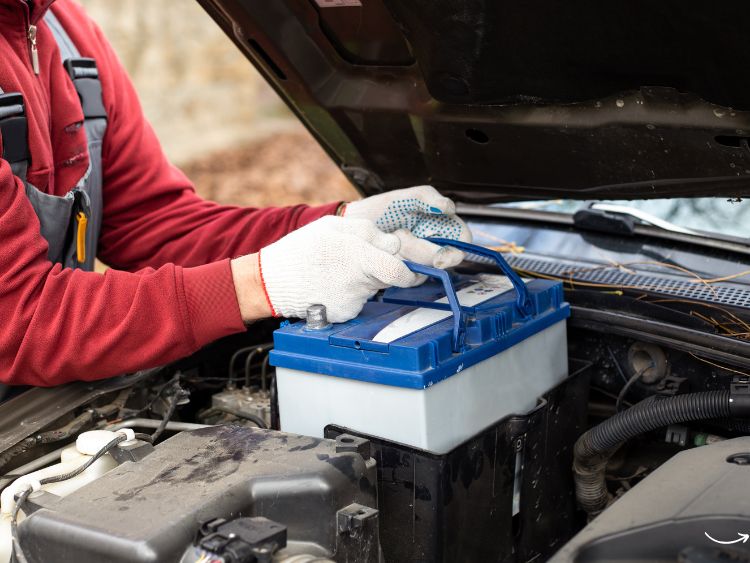Why Automotive Replacement Batteries Matter
Have you ever been caught off guard with a car that just won’t start? Oh, the frustration! Automotive replacement batteries are the unsung heroes of our vehicles, powering everything from your engine to your headlights. But when it’s time for a replacement, choosing the right battery can feel overwhelming. With countless brands, specs, and features on the market, where do you even begin? Let’s break it all down, step by step.
What Are Automotive Replacement Batteries?
Simply put, automotive replacement batteries are the lifeblood of your vehicle. They store and deliver electrical energy, enabling your car to start and power all its electronic components. Without a functioning battery, your car isn’t going anywhere.
Types of Automotive Batteries
Here’s a quick overview of the most common types of automotive batteries:
- Lead-Acid Batteries: Affordable and reliable but require regular maintenance.
- AGM (Absorbent Glass Mat) Batteries: More durable and efficient but pricier.
- Lithium-Ion Batteries: Lightweight and long-lasting, often used in electric or hybrid vehicles.
- Enhanced Flooded Batteries (EFBs): A step up from traditional lead-acid batteries, designed for start-stop vehicles.
How to Choose the Right Replacement Battery
1. Match Your Vehicle’s Requirements
Every car has specific battery needs based on its make, model, and year. Check your owner’s manual or consult a mechanic to find the right specifications.
2. Consider Your Climate
- Cold Climates: Look for a battery with a high Cold Cranking Amps (CCA) rating to ensure reliable starts in freezing temperatures.
- Hot Climates: Opt for a battery designed to withstand high heat, as extreme temperatures can shorten battery life.
3. Evaluate Your Driving Habits
- Short trips and frequent stops? Choose a battery designed for durability.
- Long-distance commutes? Prioritize a battery with extended life cycles.
Signs It’s Time for a New Battery
Wondering if your current battery is on its last leg? Here are the telltale signs:
- Slow Engine Crank: If your car takes longer to start, your battery might be weak.
- Dim Headlights: Reduced brightness can indicate a failing battery.
- Dashboard Warning Light: Don’t ignore the battery symbol lighting up.
- Corroded Terminals: Visible buildup on the battery terminals can hinder performance.
- Frequent Jump-Starts: If you’re grabbing jumper cables more often, it’s probably time for a replacement.
Installing a New Automotive Replacement Battery
Replacing a battery isn’t rocket science, but it requires some know-how. Follow these steps for a seamless installation:
- Turn Off the Engine: Safety first!
- Disconnect the Old Battery: Start with the negative terminal, then move to the positive.
- Remove the Battery: Lift it out carefully—it’s heavier than it looks!
- Install the New Battery: Place it in the holder and secure it.
- Reconnect Terminals: Positive first, then negative.
- Test It Out: Start your car to ensure everything’s working correctly.
Pro Tips for Extending Battery Life
Want to squeeze the most out of your automotive replacement battery? Here’s how:
- Keep It Clean: Regularly check for corrosion and clean the terminals.
- Limit Short Trips: Combine errands to reduce strain on your battery.
- Avoid Overloading: Don’t leave electronics running when the engine is off.
- Inspect Regularly: Test your battery’s voltage every few months.
FAQs About Automotive Replacement Batteries
1. How long does an automotive replacement battery typically last?
Most batteries last between 3 to 5 years, but factors like climate and driving habits can affect their lifespan.
2. Can I replace my car battery myself?
Absolutely! With the right tools and safety precautions, you can swap out a battery in under 30 minutes.
3. What’s the difference between lead-acid and AGM batteries?
Lead-acid batteries are budget-friendly but require maintenance, while AGM batteries are maintenance-free and perform better under high demand.
4. How can I tell if a battery is compatible with my car?
Check the battery’s size, terminal configuration, and power ratings against your car’s requirements.
5. Do I need to recycle my old battery?
Yes! Automotive batteries contain harmful chemicals and should be recycled at a designated facility.
Summary: Get the Most Out of Your Automotive Replacement Battery
Choosing and maintaining the right automotive replacement battery can save you time, money, and frustration down the road. By understanding your vehicle’s needs, recognizing the signs of a failing battery, and following simple care tips, you’ll keep your car running smoothly for years to come.
Authoritative Sources for Reference
- Battery Council International: www.batterycouncil.org
- Consumer Reports (Automotive Batteries): www.consumerreports.org
- EPA Battery Recycling Guidelines: www.epa.gov/batteries



